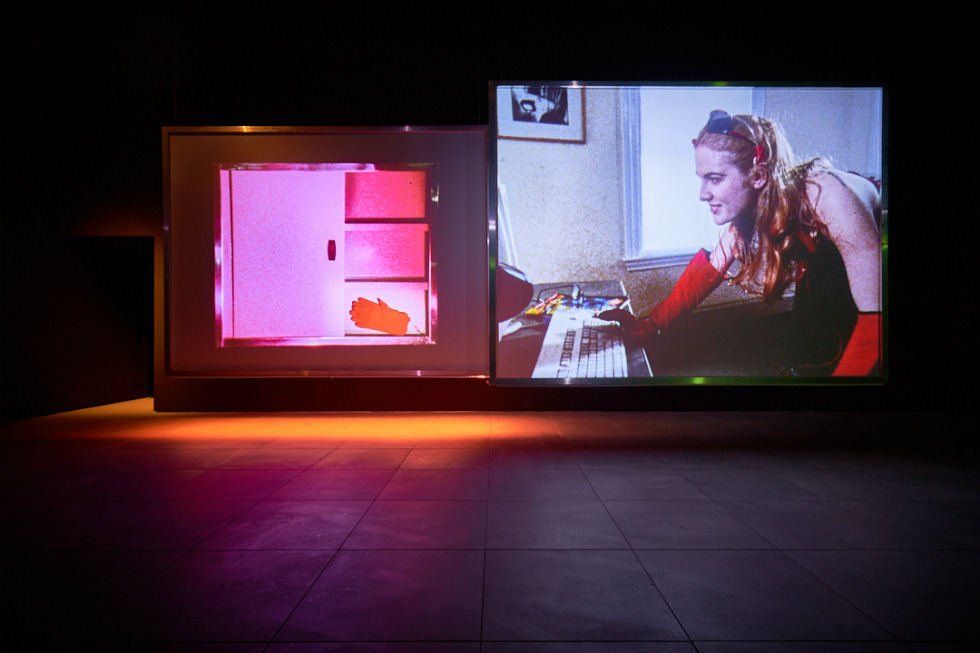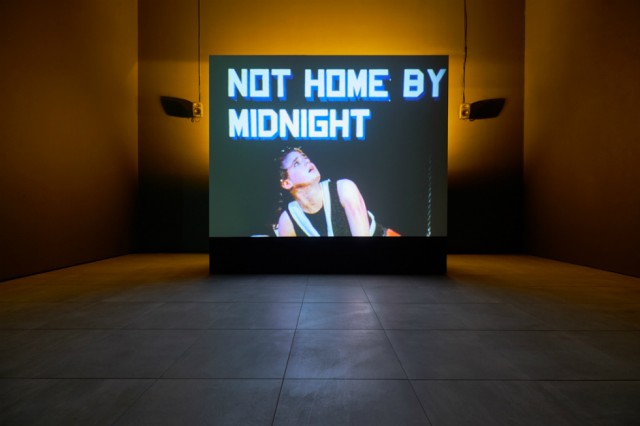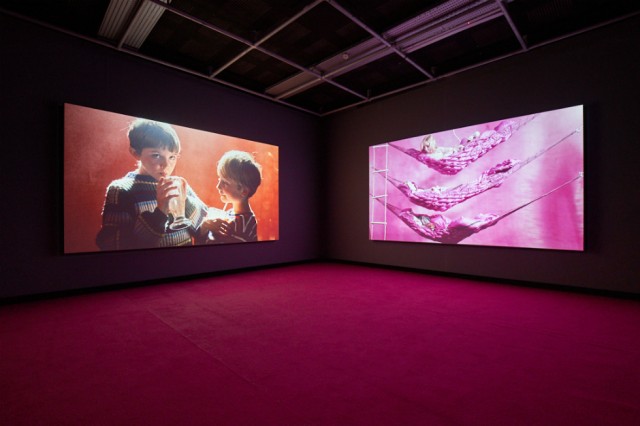Beckman & Simnett @ FACT – Reviewed

Part and parcel of our childhood, FACT Liverpool’s Ericka Beckman & Marianna Simnett exhibition puts fairy tales under the microscope. Mike Pinnington reviews…
“What can fairy tales tell us about modern-day society?” This is the on-the-face-of-it simple question posed by FACT Liverpool’s current exhibition: Ericka Beckman & Marianna Simnett. Given that many facets of identity are formed when we’re very young, it’s a fair assumption that fairy tales – amongst other formative experiences – retain some power over how we and, importantly, others perceive us. And don’t forget, either, the instilling of subsequent biases that doubtless occurs, perpetuated in adulthood.
In this context, the pairing of Beckman and Simnett is a canny one. “Their work,” says FACT’s exhibitions manager, Leslie Taker, “deconstructs and subverts grisly and aggressive fairy tales from many cultures as well as reclaiming the traditional roles and expectations within these stories.” Allowing for contrasts and observations to be made about the glacial rate of progress, the show includes works by Beckman from 1986 and 1999/2015 respectively, while Simnett’s were all initiated and made within the last five years.
You encounter the show (assuming you start on the ground floor) chronologically, with Beckman, a veteran of the Pictures Generation of artists known for critically turning the emergent multi-media of the late twentieth-century on itself, in gallery one. Here, you’ll find Cinderella (1986), a musical updating of the famous folk-tale, versions of which can be traced back to Greek oral tradition. Rendered with at-the-time cutting edge video game-style aesthetics, in addition to its obvious immediacy and pop culture allure, more than thirty years on it has now acquired a retro chic.

If in ‘classical’ versions of Cinderella there is a clear delineation between initial oppression followed by revelations of beauty, discovery (by a man) and the attached reward, here Beckman turns things on their head. Updating the well-worn narrative to incorporate multiple character lives (or turns), just like in a video game, the work foregrounds myths surrounding romantic love, and societal expectations and constraints placed on women. In Beckman’s hands, the story conjures the tyranny and traps of the ‘you can have it all: the job, the man, the lifestyle’ ideals of the 1980s, versus the reality (as our protagonist realises): “I’m just a product of all that I’ve been taught”. Beckman’s Cinderella explores and maps out the various dead ends of her world – there is no clearly signposted pathway to happiness to be found. And the dress, so coveted by Disney heroines, is laid bare as a ticket out of dodge; a prize to be sought that is, however, ultimately a trap – the design, quite literally, tangles Cinders in a spider’s web.
At the turn of the millennium, Beckman graduates – like others at the bleeding edge – from the remove of the video game world to more immersive VR graphics, with Hiatus (1999/2015). Although dealing with similar feminist concerns to the earlier work, it is a progression not only of the technology at hand. It delves more deeply into our conceptions and ideas about the roles allotted to us by society, and how, even in the make believe of the virtual world, we’re all trapped by the construct, warned to stay in our respective lanes: “A woman shouldn’t waste her talent on such a hard game”, says ‘Player 33’, an odious man in cowboy attire who serves as thorn in the side to our head-set clad protagonist’s in-game character. As is usual with film in the gallery, both Hiatus and Cinderella are shown on loop. It’s a method of presentation which – thanks to the issues raised and interrogated by Beckman – mirrors and resonates with the way our lives can feel at times, no matter the realm we occupy.
This small selection of Beckman’s works serves as narrative entertainment, lenses through which to view and critique social norms, but also as time capsule. This last point is important, because, as you move upstairs to gallery two, for Marianna Simnett’s contributions to the show, a depressing realisation quickly takes hold: decades on, Simnett is addressing the very same issues and stereotypes as Beckman.

Set against a backdrop of intensive dairy farming, 2014’s The Udder deals with the supposed virtue in chastity and self-control that girls and women (as opposed to men) are taught through folk and fairy tales. “Give me the strength to abstain” our young female protagonist sings, while disturbing parallels drawn between livestock and young girls and women are never far away. Blood (2015) treads similar ground, exposing as it does the moral ideals society imposes on women. Although landing their punches, these works too often lack the subtlety, humour and nuance of Beckman’s. Occasionally you feel like you’re being lectured to, and to say they suffer by comparison is an understatement.
It’s a shame, because the Beckman/Simnett pairing works so well in terms of demonstrating that there is some distance yet to go in the battle for equality. On the other hand, one can’t help but yearn for more room and attention to be given over to Beckman. The juxtaposition, unhappily, also reveals a glaring issue of balance of another kind; namely, that these are both white artists. What would female artists of colour, say, bring to the table? Both the exhibition and viewer would surely have benefitted from another perspective, someone whose reading of fairy tales, especially the Disney variety, would no doubt be different.
Mike Pinnington
Ericka Beckman & Marianna Simnett continues at FACT Liverpool until 16 June
Images from top: Ericka Beckman, Hiatus (1999/2015); Ericka Beckman, Cinderella (1986); |Marianna Simnett, The Udder (2014) all courtesy Rob Battersby





